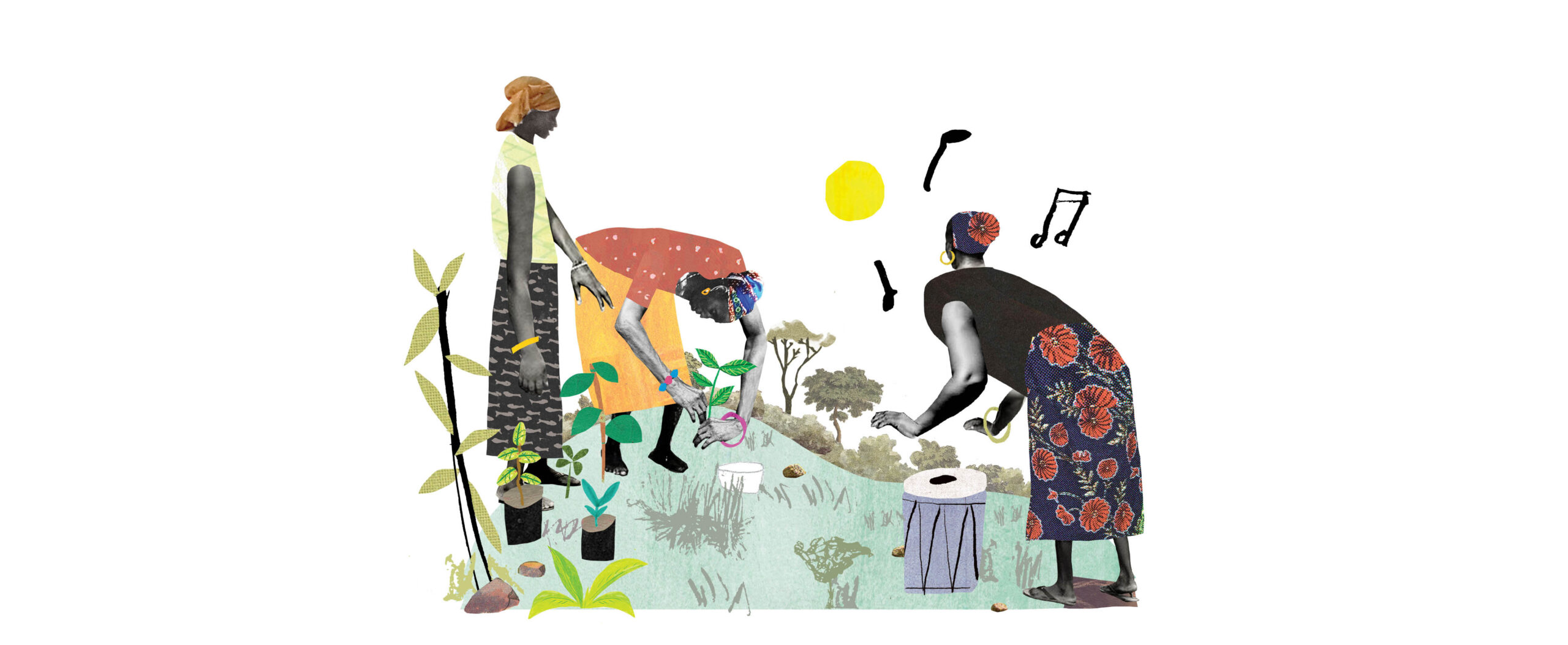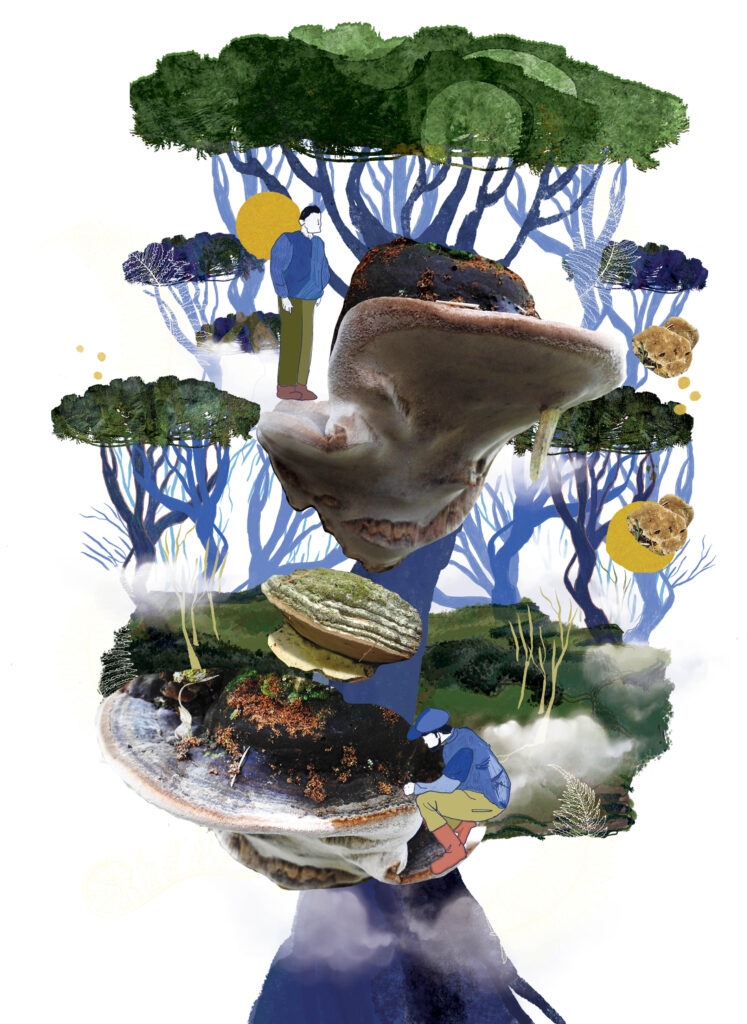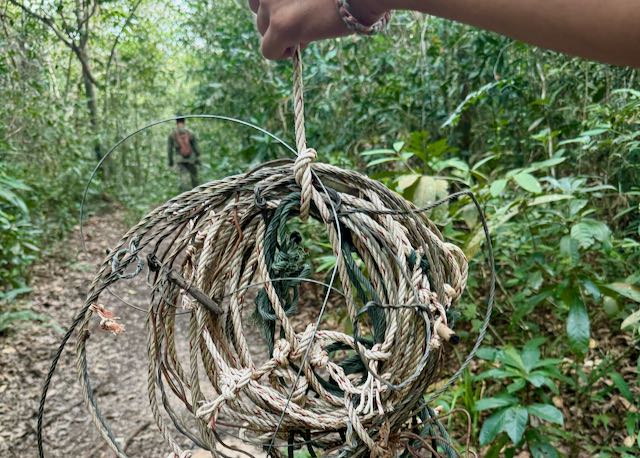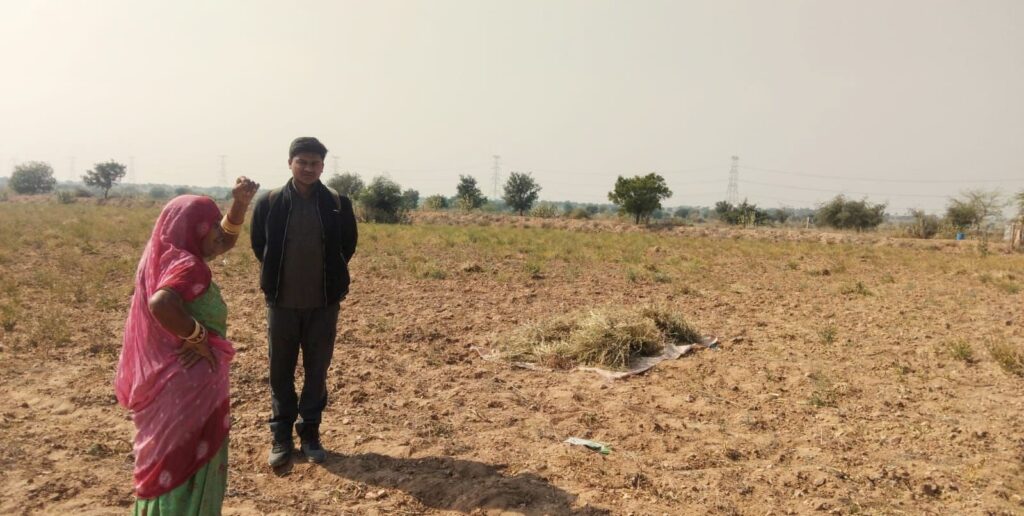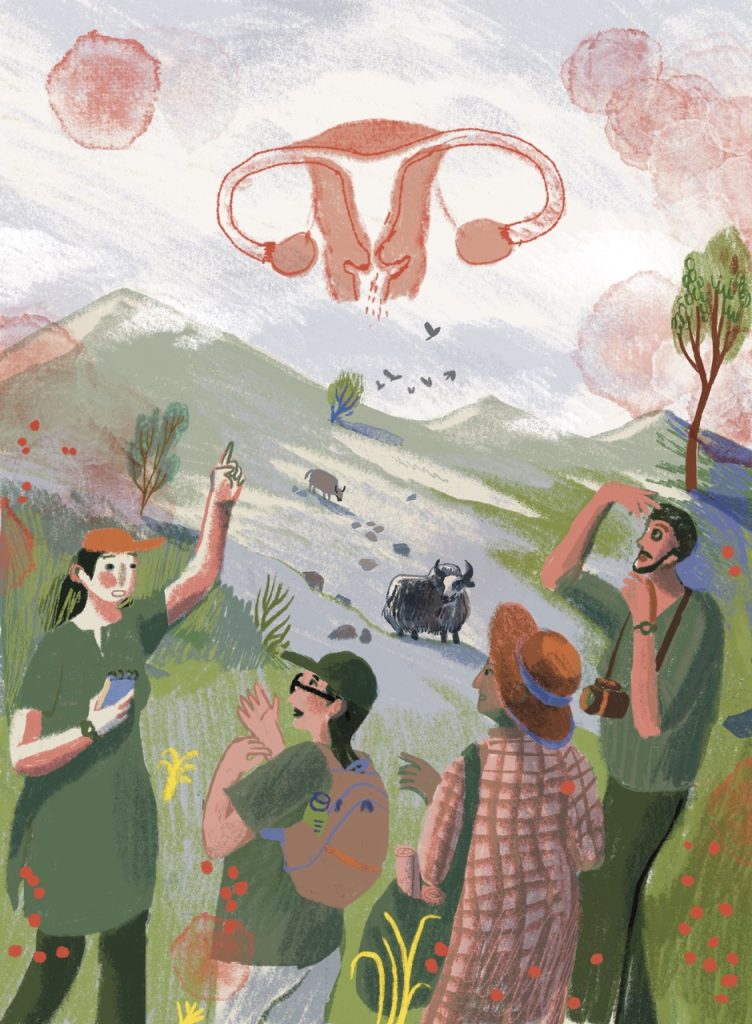Scientific fieldwork often conjures images of solitude, sweat, and lots of insects, with maybe a few exciting discoveries along the way. For those of us working in fungal-rich forest habitats, the reality often encompasses all of that and more. In our case, it also includes celebrations.
Over the past year, we have been immersed in a research project on fungal conservation in Sub-Saharan Africa, looking at sustainability and implications for livelihoods. One of the project’s goals is to restore fungi-rich habitat in sacred and community forests by planting native trees that live in symbiotic relationship with fungi, called ectomycorrhizal trees. These fungi are not just essential for forest health, they are also deeply woven into the lives, diets, and cosmologies of local communities across West Africa.
By working closely with these communities, we have come to understand something essential, not only about fungi and forests, but about joy, resilience, and the power of celebration in conservation.
Our work is based in northern Benin, in a landscape shaped by farming, fires, and fragmentation of natural habitats. The forests are home to a remarkable diversity of ectomycorrhizal fungi, including edible and medicinal species. Restoration in these areas is not just a matter of planting trees, it involves reviving whole ecological networks, and honouring the people who know them intimately. While this work is grounded in science, it is also grounded in local practice. The real magic happened not in the controlled conditions of the nursery, but in the beautiful, messy, communal space of the field.
Celebrating restoration
It started small in Papatia village, comprising Fulani, Ditamari, and Baatonu ethnic groups. As community mobilisation dragged on, we began to worry about the level of motivation for our project. Sure, a few people were active, perhaps encouraged by the remuneration involved. The plan was to mobilise the local population around 8 AM every day to start filling bags with potting soil and installing firewalls around the transplanted seedlings.
In retrospect, we were going about it the wrong way by expecting to implement our protocol. We had arrived with our methodologies, but we were not really listening. One village elder, watching us linger until nearly 11 AM for work that was supposed to start at 9 AM, finally said, “This is not how things work here.”
He was right. Then, he showed up with Pastis, a locally popular alcoholic drink. Children began gathering around the nursery, followed by their mothers. They came chatting and laughing among themselves, curious and relaxed. A few women began to sing softly. Within minutes, the singing grew louder. Someone clapped along. We had not planned a party, but a party, it seemed, had found us.
Women had been mobilised, and they quickly organised themselves. As songs echoed through the trees, one group threw themselves into the restoration activities while the other got busy preparing food. Over the course of the project, these spontaneous celebrations became a recurring theme, which helped sustain momentum and motivation throughout the restoration process. At each new planting site, community members brought their own way of celebrating.
There were moments when we wondered whether we were there to restore the forest or to attend a festival in its honour. At first, we were not sure what to make of it. As researchers, trained in scientific method and measurement, we had our eyes fixed on our data: numbers of bags filled with potting soil, survival rates of planted seedlings, numbers of participants, and gender balance. With time, we found ourselves setting aside the clipboard and joining in the festivities.
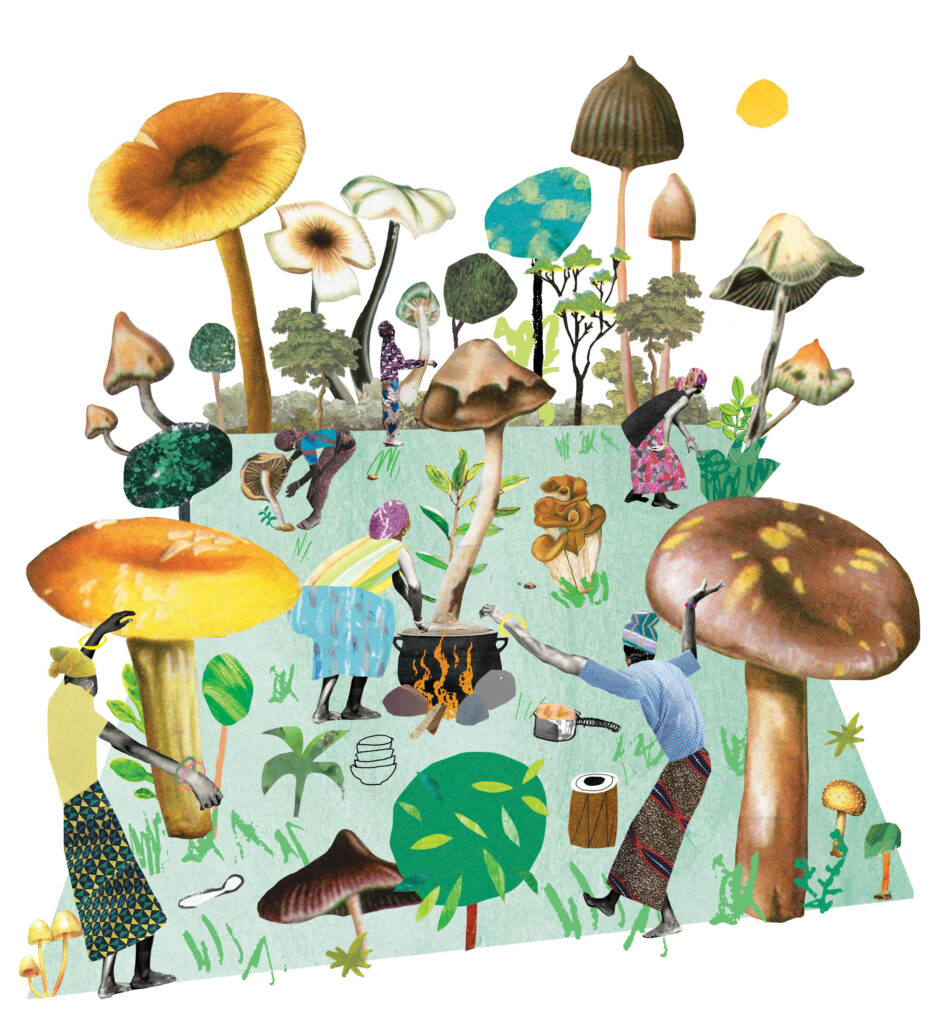
It was the first time we had witnessed this in the context of habitat restoration activities. However, such practices are common in Benin during farming work. Communities, often organised in cooperatives, gather by the dozens in a member’s field to carry out the planned tasks collectively. While some focus on the work, others play drums or sing to motivate the group. We began to realise that these celebrations were not distractions, but rather
a genuine source of motivation for our activities, even helping to increase the visibility of our project. Admittedly, some participants were more immersed in the festive atmosphere, but alcohol consumption was regulated and kept moderate. This aspect did tend to extend the duration of the work to longer than initially planned, and it required additional focus to avoid losing track of the data we needed to collect during the day, particularly survival rates. Most of the other data were usually collected at the end of the activities.
From a practical standpoint, the celebrations helped a lot. They brought people together across generations, inspired participation, and made everyone feel connected to the restoration sites. Hard work became something joyful. Even when the sun was merciless and the work physically demanding, people smiled and laughed.
Something more subtle was happening as well. These moments offered glimpses into the cultural dimensions of fungal knowledge, how these communities name, gather, cook, and value mushrooms. Women explained the songs they sang while working, which often carry messages of motivation and hope. These experiences showed us that cultural habits can in fact be the foundation of collaboration with local populations. Through their joy, people expressed a profound relationship with the land, one that has survived through generations.
Lessons for conservation scientists
There is a temptation in conservation work to treat community engagement as a box to be ticked, a stakeholder meeting here, a workshop there. However, policy frameworks, research collaborations, and project designs increasingly acknowledge that local communities are not just passive stakeholders, but active stewards of the landscapes they inhabit.
We recorded measurable indicators, but we also learned to listen to stories and attune ourselves to the emotional undercurrents that shaped these gatherings. What we witnessed during these activities challenged some of our own assumptions. The most powerful connections we experienced came from walking with villagers under a full sun, our hands still dirty from planting trees. Those moments taught us to rethink what counts as data.
In conservation science, we are trained to strive for measurable outcomes, to approach nature through the lens of management and protection. The communities we worked with taught us that conservation does not have to be serious. In fact, joy can be a strategy, one that builds stronger bonds between people and ecosystems, and that sustains engagement over the long, often difficult, arc of restoration work.
Incorporating festivities into restoration activities does not mean abandoning scientific rigour. It means broadening our definition of what success looks like. It means understanding that ecological resilience is deeply intertwined with cultural vitality. Restoration efforts that ignore the human dimension risk being shallow and short-lived.
While celebration may at first seem unrelated to ecological restoration, it can play a vital role in building trust and strengthening collaboration between researchers and local communities. Participating in shared moments dancing, eating together, exchanging stories beneath trees allows us to step beyond our roles as scientists. The success of restoration initiatives cannot always be fully captured by metrics like seedling survival rates or carbon storage. It is also reflected in more subtle but important outcomes, such as the quiet pride felt by local communities who took part in restoration efforts and now benefit from the ecosystem services provided by the restored sites.
In this way, restoration becomes not only an ecological process but a relational one about reweaving connections between people and their environments, and among community members themselves. Acknowledging and participating in these shared cultural expressions, including song and dance, is not a distraction from conservation. It can be a meaningful part of it.
Acknowledgement: We are grateful to the Darwin Initiative through the main project 30-020 granted to the University of Parakou, Benin.
